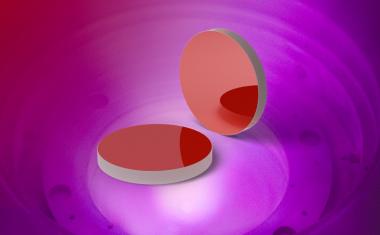Unidirectional imaging improves visual information processing
A new optical imaging technology from Aydogan Ozcan could significantly enhance communication systems.
Traditional imaging systems are bidirectional – if I can see you, you can also see me. Researchers at University of California, Los Angeles, recently developed a new type of imaging technology that could revolutionize how we capture and process visual information: unidirectional imaging. By allowing images to be formed in only one direction, this technology provides an efficient and compact method for asymmetric visual information processing and communication.

Unidirectional imaging is designed to form images from one field of view (FOV) to another, while blocking image formation in the reverse direction. This means that images are only formed from FOV A to FOV B, and not the other way around. The Ozcan Research Group at UCLA, led by Aydogan Ozcan, demonstrated that these imagers work exceptionally well under partially coherent light, which is light that has some degree of phase correlation. They achieved high-quality imaging in the forward direction (A → B) with high power efficiency, while the reverse direction (B → A) showed distorted images and much lower power efficiency. This selective imaging capability is made possible by a set of spatially engineered asymmetric linear diffractive layers that are optimized for partially coherent illumination.
Their research revealed that when the imagers are illuminated by a partially coherent beam with a phase correlation length of at least 1.5 times the wavelength of light, they perform robustly, showing a clear difference in imaging quality between the forward and backward directions. Even with a smaller correlation length, the imagers still support unidirectional image transmission, though with slightly reduced performance. “We engineered a set of spatially optimized diffractive layers that interact with partially coherent light in a way that promotes this asymmetric transmission,” explains Ozcan. “This system can work efficiently with common illumination sources like LEDs, making it adaptable for a variety of practical applications.”
These imagers are compact, measuring less than 75 times the wavelength of light in thickness, and are independent of light polarization. They are also compatible with various types of light sources, including broadband radiation, making them versatile for different applications. This makes them particularly useful for asymmetric visual information processing and communication, where controlling the direction of image formation is crucial.
The development of unidirectional imagers marks a significant step forward in imaging technology, offering new possibilities for scientific research and practical applications in fields such as optical communication and visual information processing. “This technology has the potential to impact multiple fields where controlling the flow of visual information is critical,” adds Ozcan. “Its compact design and compatibility with widely available light sources make it especially promising for integration into existing systems.” (Source: SPIE / UCLA)
Link: Ozcan Research Lab, University of California, Los Angeles, USA











